-
 Bitcoin
Bitcoin $99,594.2189
-3.59% -
 Ethereum
Ethereum $2,188.5793
-9.00% -
 Tether USDt
Tether USDt $1.0001
-0.02% -
 XRP
XRP $1.9745
-5.82% -
 BNB
BNB $608.9511
-3.73% -
 Solana
Solana $130.4575
-5.93% -
 USDC
USDC $1.0000
0.01% -
 TRON
TRON $0.2637
-3.59% -
 Dogecoin
Dogecoin $0.1493
-5.97% -
 Cardano
Cardano $0.5322
-6.72% -
 Hyperliquid
Hyperliquid $33.9044
3.33% -
 Bitcoin Cash
Bitcoin Cash $449.6411
-5.46% -
 UNUS SED LEO
UNUS SED LEO $8.9629
0.43% -
 Sui
Sui $2.3943
-8.35% -
 Chainlink
Chainlink $11.4402
-7.83% -
 Stellar
Stellar $0.2241
-6.49% -
 Avalanche
Avalanche $16.1489
-4.24% -
 Toncoin
Toncoin $2.7182
-5.94% -
 Shiba Inu
Shiba Inu $0.0...01040
-5.72% -
 Litecoin
Litecoin $78.7882
-4.07% -
 Ethena USDe
Ethena USDe $1.0004
-0.01% -
 Hedera
Hedera $0.1305
-7.45% -
 Monero
Monero $297.0030
-5.32% -
 Dai
Dai $0.9997
-0.02% -
 Polkadot
Polkadot $3.1834
-6.03% -
 Bitget Token
Bitget Token $3.9788
-7.03% -
 Uniswap
Uniswap $6.1327
-10.62% -
 Pepe
Pepe $0.0...08689
-8.30% -
 Pi
Pi $0.4826
-9.65% -
 Aave
Aave $219.8043
-9.69%
How do I transfer Ethereum to my MetaMask wallet?
Ensure your MetaMask wallet is set to Ethereum Mainnet, copy your receiving address carefully, and verify gas fees before sending ETH from your exchange or wallet.
Jun 23, 2025 at 01:42 am
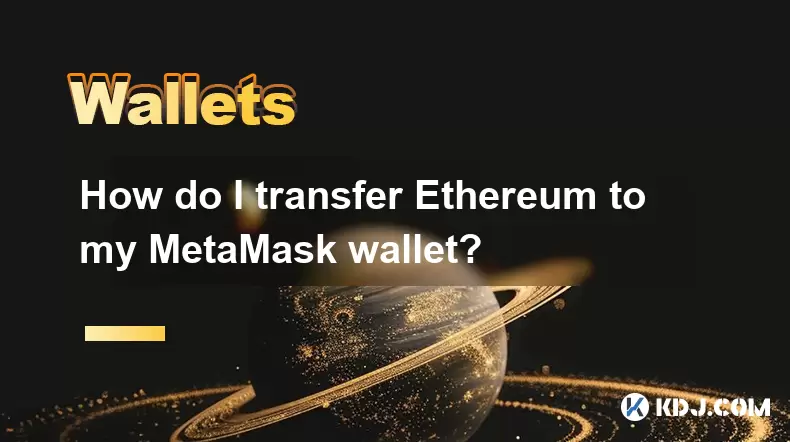
Preparing Your Ethereum Transfer
Before initiating the transfer of Ethereum to your MetaMask wallet, ensure that you have all the necessary tools and information ready. You will need access to the wallet or platform where your Ethereum (ETH) is currently stored, such as a cryptocurrency exchange or another wallet service. Additionally, make sure your MetaMask wallet is properly set up on your browser or mobile device.
It is crucial to verify the network settings in your MetaMask wallet. By default, MetaMask supports the Ethereum Mainnet, which should be selected for this transaction. If you are using a different network like Binance Smart Chain or Polygon, switch back to the Ethereum Mainnet before proceeding.
Always double-check the wallet address you will use to receive the funds. To locate your receiving address in MetaMask, open the wallet and click on the "Account 1" section or whichever account you wish to use. A pop-up will show your public address — this is what you will copy and provide to the sending wallet or exchange.
Copying the MetaMask Wallet Address
Once you’ve located your MetaMask wallet address, it's time to copy it accurately. Click the “Copy” button next to the address to ensure no characters are missed or altered. It’s important not to manually type the address, as even a small typo can result in irreversible loss of funds.
Open the wallet or exchange from which you want to send Ethereum. Navigate to the withdrawal or send section for Ethereum (ETH). Paste the copied MetaMask address into the recipient field. Some platforms may also allow you to scan a QR code — if available, this is another reliable way to input the address.
After pasting or scanning, wait for the system to validate the address. Most platforms will display the associated network and sometimes the wallet name. Confirm that the network is Ethereum (ETH) and not any other blockchain like BSC or Polygon, as sending funds to an incompatible network could lead to permanent loss.
Setting Up Gas Fees for the Transaction
Before finalizing the transfer, you must configure the gas fees. These fees are paid in Ethereum (ETH) and are used to compensate miners for processing your transaction on the blockchain. In the sending interface, you’ll typically find options labeled “Gas Limit” and “Gas Price.”
If you’re unsure how to set these values, most exchanges and wallets offer a recommended setting based on current network congestion. For transfers to MetaMask, the standard gas limit for sending ETH is 21,000 units. The gas price fluctuates depending on network activity and is usually displayed in Gwei, which is a fraction of one Ether (ETH).
Some platforms may automatically calculate both fields. If you're using a wallet like Trust Wallet or Coinbase Wallet, they often handle gas settings for you. However, if you're on a decentralized exchange or interacting directly with the blockchain, manual entry might be required. Always review the total fee before proceeding, as high gas prices during busy periods can significantly increase costs.
Confirming and Finalizing the Ethereum Transfer
With the recipient address verified and gas fees configured, proceed to confirm the transaction. Enter any additional verification steps your sending platform requires, such as two-factor authentication (2FA) or email confirmation. Once confirmed, the transaction will be broadcasted to the Ethereum blockchain.
You can monitor the progress of your transaction using a blockchain explorer like Etherscan.io. Simply paste your MetaMask wallet address into the search bar, and you’ll see pending transactions under the “Pending” tab. Typically, Ethereum transfers take anywhere from 30 seconds to several minutes, depending on network speed and gas fees.
While waiting, do not close or refresh the sending page until the transaction hash is displayed. This hash acts as proof of your transfer and can be used for support inquiries if needed. Also, avoid making multiple transfers simultaneously unless necessary, as this can complicate tracking and delay receipt of funds.
Checking the Receipt of Ethereum in MetaMask
After the transaction has been processed, return to your MetaMask wallet to confirm receipt. Refresh the wallet if needed by clicking the circular arrow icon. You should see the incoming Ethereum (ETH) reflected in your balance within a few minutes.
If the funds don’t appear immediately, check the transaction status via Etherscan again. Sometimes, especially during high congestion, transactions can remain pending for longer than usual. As long as the transaction is valid and has sufficient gas, it should eventually go through.
In rare cases where the transaction fails or gets dropped from the network, you may need to resend it with a higher gas price. MetaMask will usually notify you of failed transactions, allowing you to retry with adjusted gas settings. Never attempt to send another transaction to the same address without first confirming whether the initial one succeeded or failed.
Frequently Asked Questions (FAQ)
What happens if I send Ethereum to a non-Ethereum network in MetaMask?
Sending Ethereum (ETH) to a wallet address on a different network (e.g., BSC or Polygon) inside MetaMask can result in lost funds. Ensure that both the sending and receiving networks are set to Ethereum Mainnet before transferring.
Can I cancel an Ethereum transaction once sent?
No, blockchain transactions are irreversible. Once you've initiated the transfer and it's been confirmed by the network, it cannot be canceled or reversed. Always double-check the details before confirming.
Why does my MetaMask wallet show a lower balance after receiving Ethereum?
This discrepancy may occur if you have multiple accounts or hidden tokens in your wallet. Switch between accounts in MetaMask to locate the correct balance. Alternatively, refresh the page or reconnect your wallet to update the balance.
Do I need ETH in my MetaMask wallet to receive more ETH?
No, you don't need existing ETH in your MetaMask wallet to receive more. However, you will need some ETH to pay for future transactions like sending funds or interacting with dApps.
Disclaimer:info@kdj.com
The information provided is not trading advice. kdj.com does not assume any responsibility for any investments made based on the information provided in this article. Cryptocurrencies are highly volatile and it is highly recommended that you invest with caution after thorough research!
If you believe that the content used on this website infringes your copyright, please contact us immediately (info@kdj.com) and we will delete it promptly.
- Solana, Aptos, and Stable Tokens: Wyoming's Bold Move and the Future of Finance
- 2025-06-23 08:25:12
- Ruvi AI: The Next Binance Coin? A Token Rally to Watch
- 2025-06-23 08:25:12
- Ruvi AI vs. Dogecoin: Can AI Deliver Better ROI?
- 2025-06-23 08:45:12
- SHIB, WLD, BlockDAG: Navigating Crypto's Crossroads in 2024
- 2025-06-23 08:45:12
- Ruvi AI: Revolutionizing ROI Predictions in the Crypto Space
- 2025-06-23 09:05:12
- Ruvi AI: Is This the Token Poised for Bigger ETH Gains?
- 2025-06-23 09:05:12
Related knowledge
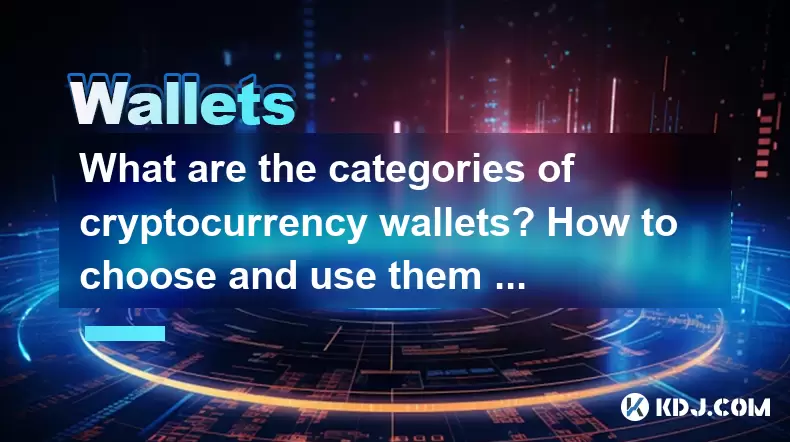
What are the categories of cryptocurrency wallets? How to choose and use them safely?
Jun 21,2025 at 10:42pm
Understanding Cryptocurrency WalletsCryptocurrency wallets are essential tools for anyone involved in the digital asset ecosystem. They allow users to store, send, and receive cryptocurrencies securely. Unlike traditional wallets that hold physical money, crypto wallets manage cryptographic keys—private and public—which interact with blockchain networks...
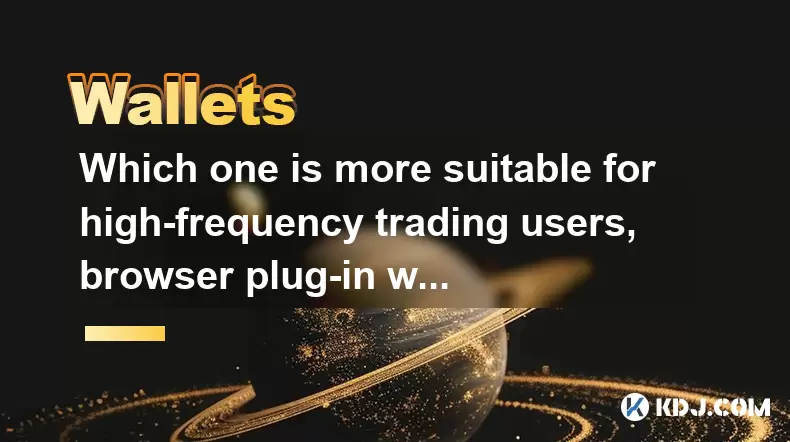
Which one is more suitable for high-frequency trading users, browser plug-in wallets or independent application wallets?
Jun 23,2025 at 08:22am
Understanding the Role of Wallets in High-Frequency TradingFor high-frequency trading (HFT) users in the cryptocurrency market, wallet selection is critical due to the need for speed, security, and seamless integration with trading platforms. HFT involves executing a large number of trades within seconds or even milliseconds, which demands a wallet that...
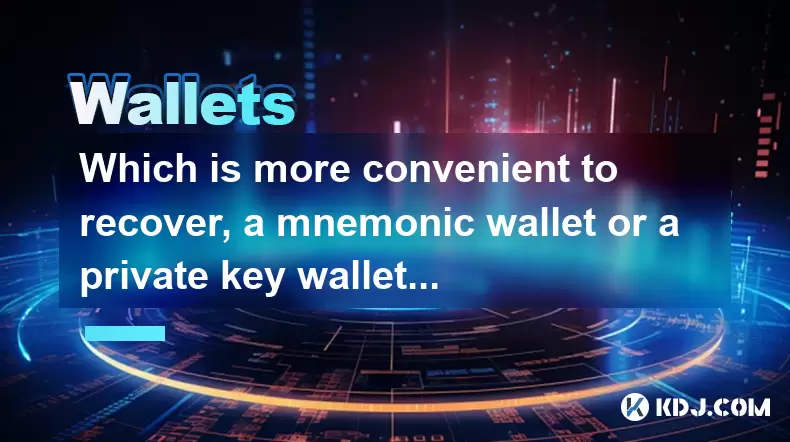
Which is more convenient to recover, a mnemonic wallet or a private key wallet? Will security be compromised?
Jun 20,2025 at 06:36am
Understanding Mnemonic Wallets and Private Key WalletsIn the world of cryptocurrency, wallet recovery is a crucial aspect that users must understand before storing digital assets. Two popular methods for securing and recovering wallets are mnemonic phrases and private keys. Both serve as gateways to access funds, but they differ significantly in terms o...
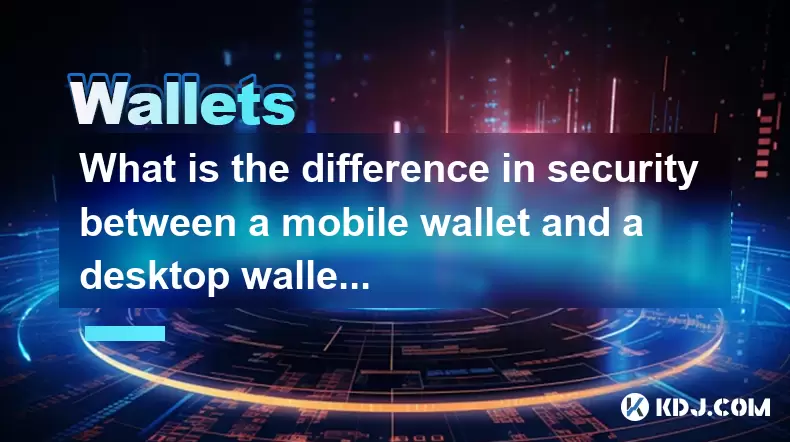
What is the difference in security between a mobile wallet and a desktop wallet?
Jun 22,2025 at 12:35pm
Understanding the Security Aspects of Mobile WalletsMobile wallets are digital wallets designed to run on smartphones, allowing users to store, send, and receive cryptocurrencies conveniently. The security of mobile wallets largely depends on how well the device is protected from malware, phishing attacks, and unauthorized access. One key feature of mob...
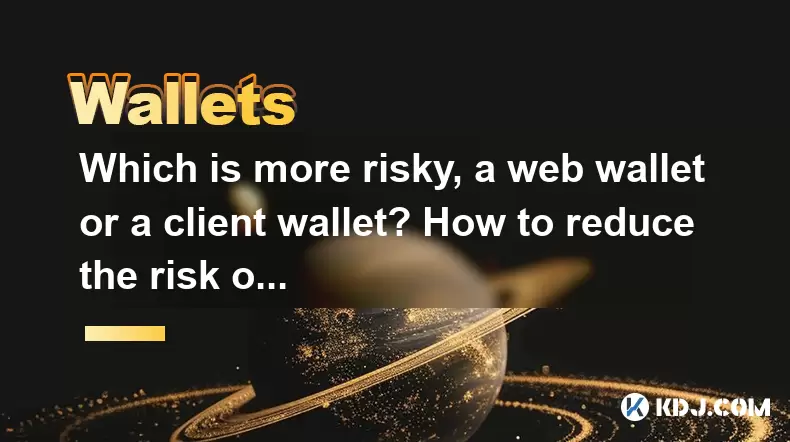
Which is more risky, a web wallet or a client wallet? How to reduce the risk of use?
Jun 22,2025 at 09:21pm
Understanding Web Wallets and Client WalletsWhen managing cryptocurrencies, choosing the right type of wallet is crucial. Web wallets and client wallets are two popular options among users, each with its own set of advantages and disadvantages. A web wallet operates through a browser interface and is usually hosted online by third-party services. This m...

How is a multi-signature wallet safer than a single-signature wallet?
Jun 21,2025 at 07:56pm
Understanding Signature Mechanisms in Cryptocurrency WalletsIn the world of cryptocurrency, securing digital assets is paramount. One of the core aspects of this security lies in the signature mechanism used by wallets. A single-signature wallet requires only one private key to authorize a transaction. This means that if an attacker gains access to that...

What are the categories of cryptocurrency wallets? How to choose and use them safely?
Jun 21,2025 at 10:42pm
Understanding Cryptocurrency WalletsCryptocurrency wallets are essential tools for anyone involved in the digital asset ecosystem. They allow users to store, send, and receive cryptocurrencies securely. Unlike traditional wallets that hold physical money, crypto wallets manage cryptographic keys—private and public—which interact with blockchain networks...

Which one is more suitable for high-frequency trading users, browser plug-in wallets or independent application wallets?
Jun 23,2025 at 08:22am
Understanding the Role of Wallets in High-Frequency TradingFor high-frequency trading (HFT) users in the cryptocurrency market, wallet selection is critical due to the need for speed, security, and seamless integration with trading platforms. HFT involves executing a large number of trades within seconds or even milliseconds, which demands a wallet that...

Which is more convenient to recover, a mnemonic wallet or a private key wallet? Will security be compromised?
Jun 20,2025 at 06:36am
Understanding Mnemonic Wallets and Private Key WalletsIn the world of cryptocurrency, wallet recovery is a crucial aspect that users must understand before storing digital assets. Two popular methods for securing and recovering wallets are mnemonic phrases and private keys. Both serve as gateways to access funds, but they differ significantly in terms o...

What is the difference in security between a mobile wallet and a desktop wallet?
Jun 22,2025 at 12:35pm
Understanding the Security Aspects of Mobile WalletsMobile wallets are digital wallets designed to run on smartphones, allowing users to store, send, and receive cryptocurrencies conveniently. The security of mobile wallets largely depends on how well the device is protected from malware, phishing attacks, and unauthorized access. One key feature of mob...

Which is more risky, a web wallet or a client wallet? How to reduce the risk of use?
Jun 22,2025 at 09:21pm
Understanding Web Wallets and Client WalletsWhen managing cryptocurrencies, choosing the right type of wallet is crucial. Web wallets and client wallets are two popular options among users, each with its own set of advantages and disadvantages. A web wallet operates through a browser interface and is usually hosted online by third-party services. This m...

How is a multi-signature wallet safer than a single-signature wallet?
Jun 21,2025 at 07:56pm
Understanding Signature Mechanisms in Cryptocurrency WalletsIn the world of cryptocurrency, securing digital assets is paramount. One of the core aspects of this security lies in the signature mechanism used by wallets. A single-signature wallet requires only one private key to authorize a transaction. This means that if an attacker gains access to that...
See all articles
























































































